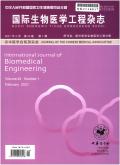Fetomaternal hemorrhage in RhD-negative pregnant women in Tianjin
引用次数: 0
Abstract
Objective To study and monitor the situation of femomaternal hemorrhage (FMH) in RhD-negative pregnant women in Tianjin, obtain the FMH data of such population, and analyze the relationship between FMH and age, blood type, gestational age, hemolytic disease of postpartum neonates, etc. Methods The FMH level was detected by flow cytometry with FITC-anti-HbF monoclonal antibody. The blood type was detected by blood serum method. The irregular antibody was identified by saline method and indirect anti-human ball method. The hemolysis of postpartum neonates was detected by three tests of hemolysis. Results The FMH volume of 86 RhD negative pregnant women was between 0 and 11.48 ml, with an average of 1.82 ml. There were 63.95% of pregnant women showed a volume of FMH 10 ml. The proportion of lower FMH in pregnant women ≤30 years old was >11.71% higher than that in the pregnant women >30 years old, but the difference was no statistical significant. There was no significant difference in FMH of pregnant women with O, A, B and AB types. The proportion of higher FMH in pregnant women with compatible ABO blood type with her husband was 12.46% lower than that of the heterozygous cases, but the difference was no statistical significant. The proportion of higher FMH in the pregnant women with 28 to 32 weeks gestational age was 14.55% higher than that of ≤28 weeks and was 35.32% higher than that of >32 weeks, and the differences were statistical significant. Three samples in the 86 samples were positive for anti-D antibody, and their three hemolytic test results were strongly positive with the anti-D titer from 1:2 to 1:32 and the FMH volume from 1.50 to 6.93 ml. The proportion of lower FMH in the 10 pregnant women without postpartum hemolysis was 70% higher than that in 5 pregnant women with postpartum hemolysis, but the differences were not statistical significant. Conclusions The results suggest that monitoring FMH content by flow cytometry can reflect FMH in Rh-negative pregnant women. The studies on the relationship between FMH and age, blood type, pregnant time and hemolytic disease of postpartum neonates can provide basically experimental data for standard use of anti-D immunoglobulin in pregnant women. Key words: RhD blood type; Fetomaternal hemorrhage; Anti-D immunoglobulin; Hemolytic disease of newborn天津地区rh阴性孕妇的胎母出血
目的研究和监测天津市rhd阴性孕妇产妇出血(FMH)情况,获取该类人群的FMH数据,分析FMH与年龄、血型、胎龄、产后新生儿溶血性疾病等的关系。方法采用fitc -抗hbf单克隆抗体流式细胞术检测FMH水平。采用血清法检测血型。不规则抗体采用生理盐水法和间接抗人球法进行鉴定。采用溶血三项试验检测产后新生儿溶血情况。结果86例RhD阴性孕妇FMH体积在0 ~ 11.48 ml之间,平均为1.82 ml, 63.95%的孕妇FMH体积为10 ml,≤30岁孕妇FMH较低的比例比>30岁孕妇高11.71%,但差异无统计学意义。O型、A型、B型和AB型孕妇FMH无显著性差异。与丈夫ABO血型相容的孕妇FMH较高的比例比杂合的孕妇低12.46%,但差异无统计学意义。28 ~ 32周孕龄孕妇FMH较高的比例比≤28周高14.55%,比bb ~ 32周高35.32%,差异有统计学意义。86例样本中有3例抗d抗体阳性,3例溶血试验结果均为强阳性,抗d滴度为1:2 ~ 1:32,FMH体积为1.50 ~ 6.93 ml。10例无产后溶血孕妇FMH较低的比例比5例有产后溶血孕妇高70%,但差异无统计学意义。结论流式细胞术检测FMH含量可反映rh阴性孕妇FMH的变化。研究FMH与产后新生儿年龄、血型、妊娠时间及溶血性疾病的关系,可为孕妇规范使用抗d免疫球蛋白提供基本的实验数据。关键词:RhD血型;Fetomaternal出血;Anti-D免疫球蛋白;新生儿溶血病
本文章由计算机程序翻译,如有差异,请以英文原文为准。
求助全文
约1分钟内获得全文
求助全文

 求助内容:
求助内容: 应助结果提醒方式:
应助结果提醒方式:


